The content of the article
Considering the next representative of the aspid family, it makes sense to highlight her aesthetic data. A two-lane glandular snake differs from its counterparts in behavior and other features that we will consider today. You can make your own opinion about these reptiles by studying where they live, what are the dangerous, how they feed.
Description
- These snakes are not large, they are rather average. The representatives of the family grow up to 1.8 m in length along the maximum. But, as a rule, individuals are found much less - within 1.4 m. This is the average value characteristic of most of the population.
- A distinctive characteristic of reptiles of this species is a shiny reddish tail and the same abdominal part with a head. The variety got its name because of the strips of blue tones that are located on the side parts of the case.
- The well-known fact says that the brightness of a snake testifies to its toxicity. Therefore, our representative of reptiles is quite dangerous, a meeting with her can end in failure. The nose is a blunt format, due to which the individual rummages through foliage and debris of a different nature. The eyes are small, located on the side.
- The color is attractive, striking, the contrast of colors makes the variety under discussion one of the most beautiful of its kind. The pigmentation is dominated by shades of blue, red, yellow and black. The scales are smooth, shiny.
- The name contains a postscript - glandular snake. She received this characteristic for a reason. A good portion of dangerous toxic substances is concentrated in the poisonous glands, so in some cases a bite results in death.
- By the way, the size of this gland exceeds the characteristics of snakes of other species. Accordingly, the poison is much more concentrated. More than 1/3 of the section is allocated from the total part of the head to this gland. When the poison enters the human body or the victim, serving as a snake food, it instantly attacks the central nervous system.
- The fangs with which the reptile inflicts a bite are large, sharp and strong. They stand out from the rest of the dentition and move forward for a better attack. The fangs bend, preventing the victim from sliding off the hook.
- During the attack, the poison leaves one tooth, the second serves as a spare. When a snake changes teeth, it is the “reserve" that takes on the poisonous role, so the poison leaves the second tooth. In order of order, the fangs succeed each other, so the glandular snake is always fully armed.
Lifestyle
- The species of snakes under discussion is quite rare, therefore, only the most unlucky person or researcher who intentionally tracks these reptiles will be able to meet with it. It's all about secrecy, according to the way of life, individuals do not rush to show themselves to the eyes and do not attack first if there is no threat. They are awake, preferably at night, when they want to find food.
- In the daytime, other predators and especially people are not shown. The list of exceptions includes rainy weather and cloudy days, when it is comfortable to be in an open area. Snakes try to bypass people, when they meet a person, they immediately try to escape, not attack.
- For an individual to sting, it must feel an imminent threat. Ordinary walks through the woods do not belong to those. Artistic abilities allow this representative of the aspids to confuse the enemy. The snake twists, makes a stand, kicks, showing its strength. In fact, she is an incredible coward, despite the accumulation of poison in the glands.
- The individuals under discussion are motile, they protect their head, masterfully substituting another part of the body. It has long been believed that these representatives have 2 heads. They were depicted on banners and other objects of honor. You can stumble upon a two-lane snake only at night, by your own carelessness, which is why most bites occur.
Habitat
- The considered individuals often prefer to live on tops of rocks, in which there are moist and deep blockages of fallen tree leaves. Most often, such conditions are found in Southeast Asia. Among such countries, Thailand and Cambodia can be distinguished.
- In addition, such snakes are often found in Laos. The characteristic distribution of these reptiles is inherent in the islands of Indonesia. Represented individuals without any problems can locate their homes directly on agricultural land. Also, their nests are found in the depths of forests.
- Such snakes do not equip their homes in open spaces. These reptiles prefer places in which they can be easily lost, even despite their bright color. Often these places are woody bushes or shrubs. Such a snake prefers the area, which is located near the pond.
- In addition, the presented individuals do not like medium elevations. Such a snake simply needs to inhabit at least 700 m above sea level. Only in rare cases do individuals occupy lowlands. In addition, these reptiles are very fond of burrowing in foliage, mounds, soil and sand.
Nutrition
- The diet of these individuals is mainly based on lizards, other snakes, small birds and frogs. Among other things, an interesting fact deserves special attention. Among representatives of this species, cannibalism is common.
- However, such reptiles do not attack the direct and close of their relatives. Only in rare cases, such individuals catch someone except dwarf snakes or calamaria.
Breeding
- It is interesting that such snakes belong to the oviparous species. At a time in a clutch there can be no more than 3 eggs. Outside they have a leathery structure. This is quite normal for snakes. Otherwise, such a question is poorly studied. The problem is that in terrarium conditions such snakes do not breed.
- As for the behavior of individuals during the mating season, it is also difficult to predict everything. There is a version that individuals equip a nest in the place where the female lives. It is she who selects a suitable area with a sufficient amount of plant filling. In addition, after the birth of the young, the parents do not care much about their fate. However, the female tries to protect the masonry itself.
Natural enemies
- There are practically no enemies in these individuals. Do not forget that such reptiles themselves can carry a huge danger to all living things.
- This snake is very poisonous, and you should not contact it in any way. As a pet, she is not good. A person after a bite dies in just 5 minutes. And there is no antidote.
Presented reptiles have a beautiful appearance. However, a person is better off not encountering such snakes. The problem is that the specimens are extremely poisonous and there is still no vaccine. After a bite, it paralyzes the entire body and makes breathing difficult. Death occurs within minutes.

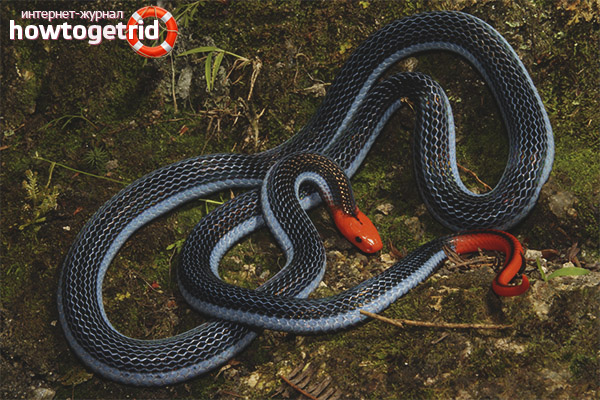
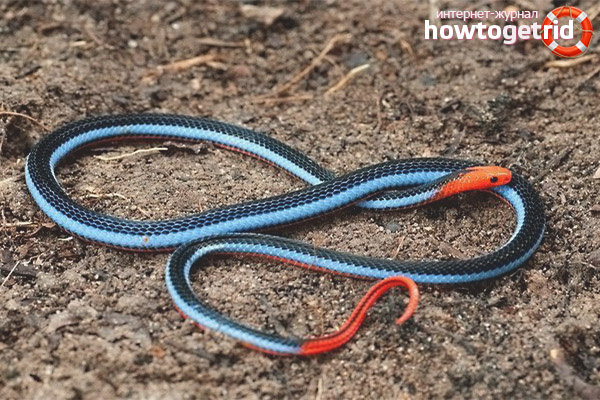
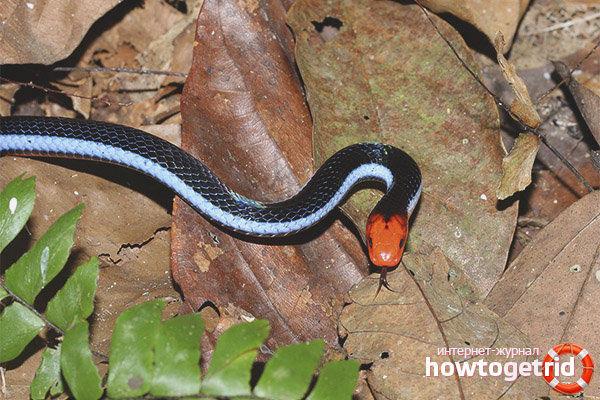

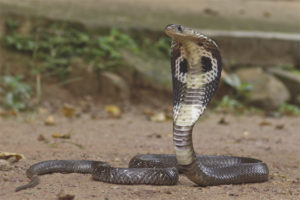
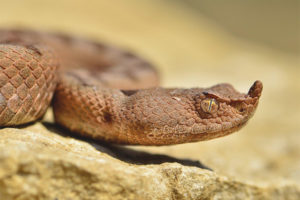
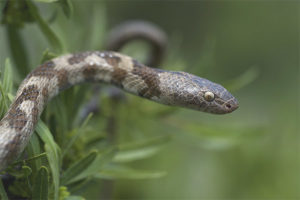
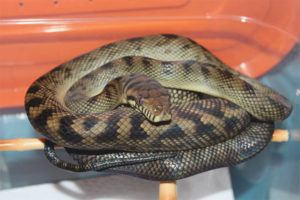
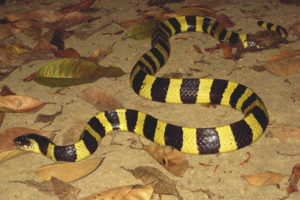

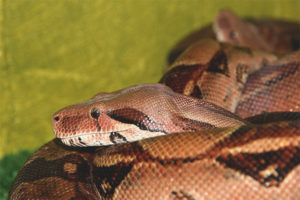
Submit